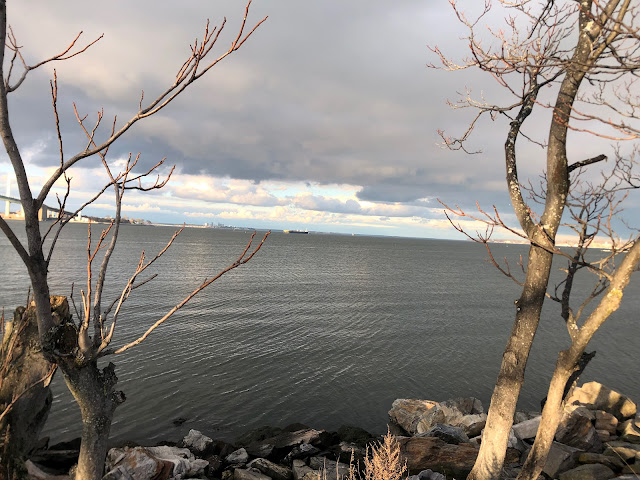Rain, interrupted by showers, fell pretty constantly from Wednesday until early yesterday morning. I ventured out for “quickies” along the waterfronts of Long Island City and Greenpoint. Late yesterday afternoon, I took a slightly longer, and definitely familiar, to Fort Totten.
I don’t mind riding in the rain as long as it isn’t cold. (I also don’t mind the cold as long as it’s not wet.) Since Christmas, the high temperatures have clustered around 10c (50F), which is mild for this time of year.
But the best meteorological feature of yesterday afternoon, at least to my eyes, was the clouds. I love seeing such a heavy, thick and even dark mounds when I know they’re not going to drop any more rain. I especially like the way they move, but don’t move away, enough for the sun to poke through, and how those rays are refracted through clouds and onto rippling waves.
Two of my favorite songs are the Beatles’ “Here Comes The Sun” and Johnny Nash’s “I Can See Clearly Now.” Who couldn’t feel good about hearing the best Fab Four song (aside, possibly, from “Something”) not written by John or Paul? The point of that song isn’t the sun itself; rather, it’s that hope and clarity are on the way. And the most popular reggae tune that nobody thinks of as a reggae tune is about, I believe, the moment after.
Somehow I felt I could see more clearly in yesterday’s late-afternoon winter light by the water, than I could under a cloudless summer sky. That might be the best reason to ride at this time of year, at that time of year, after two days of rain punctuated by showers.











